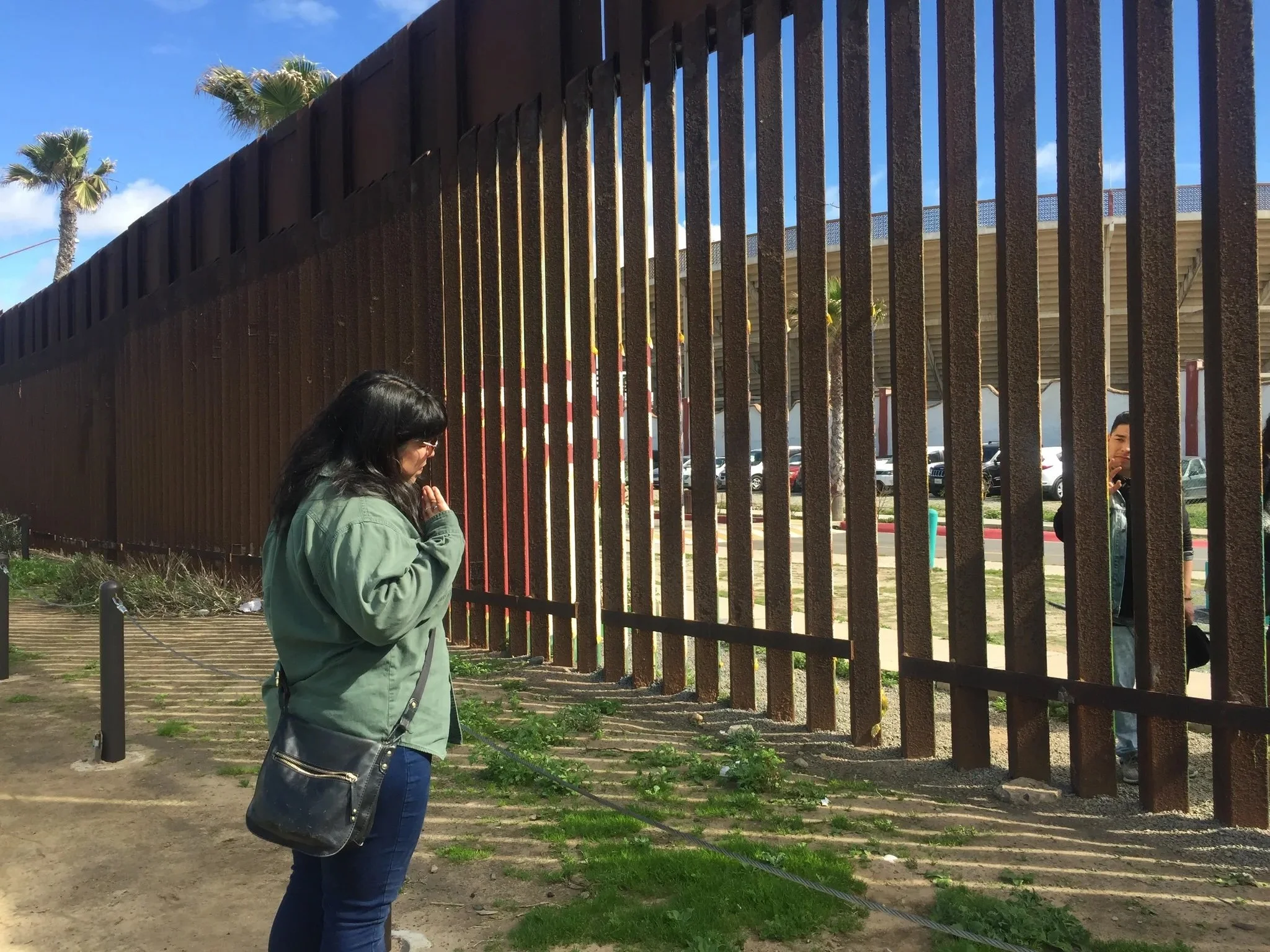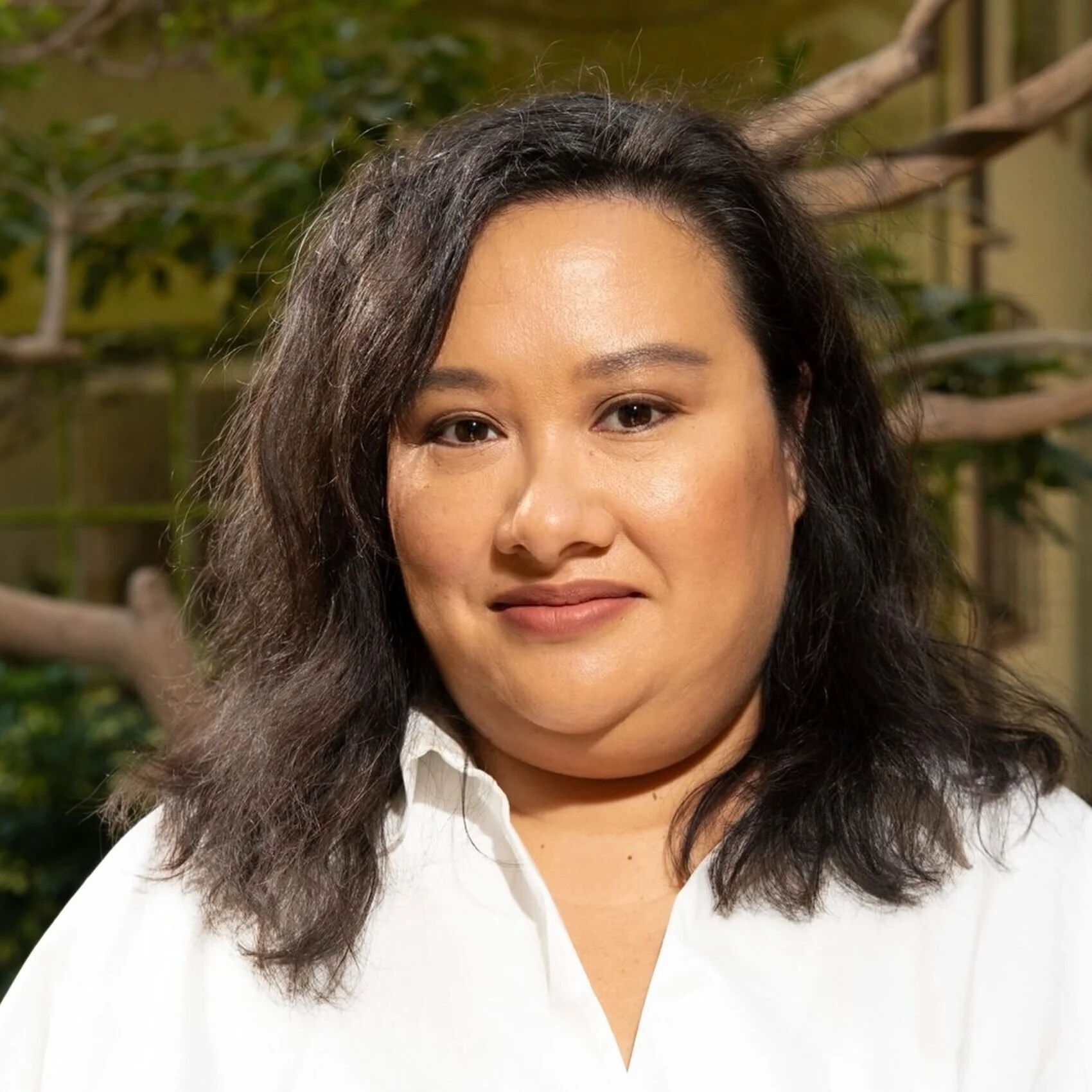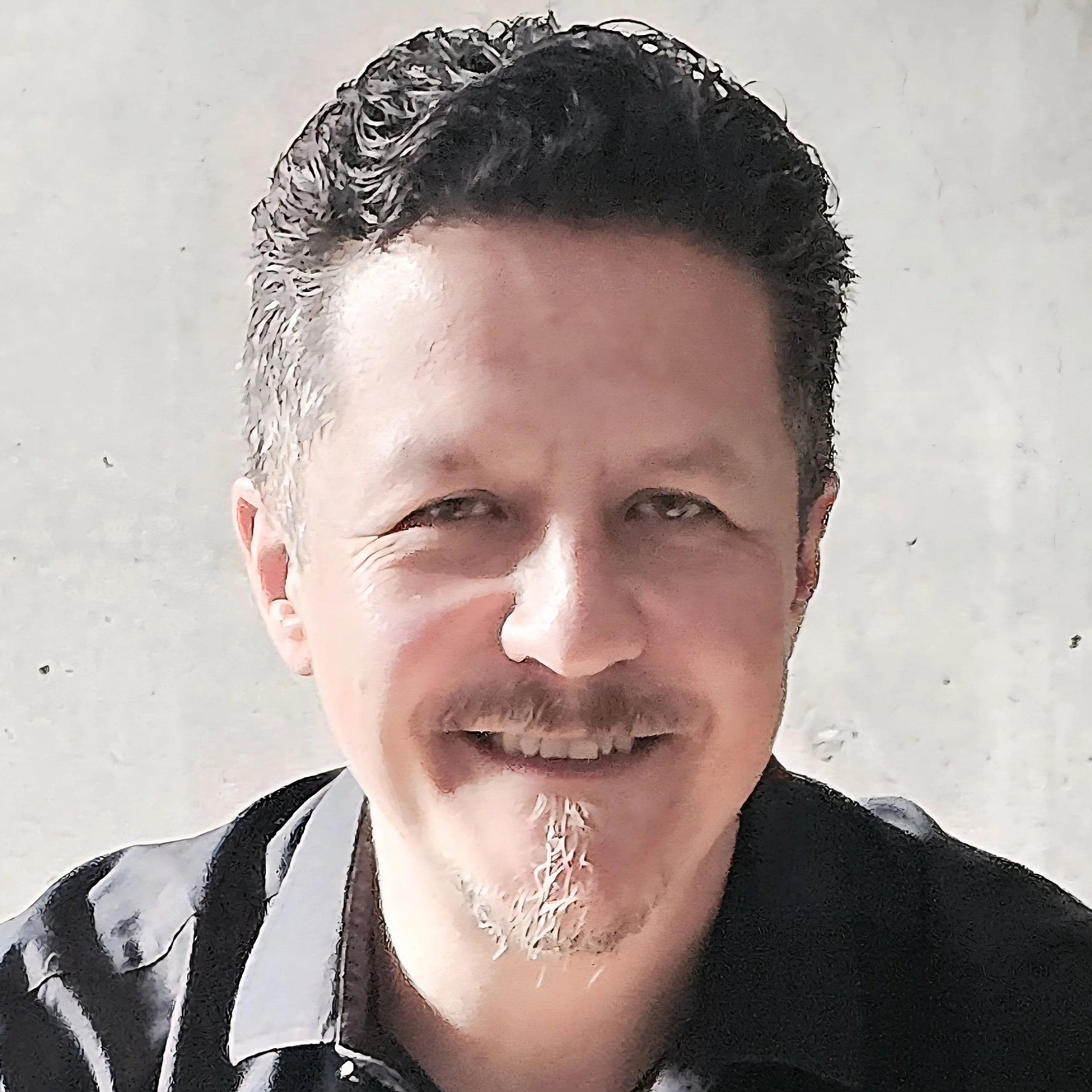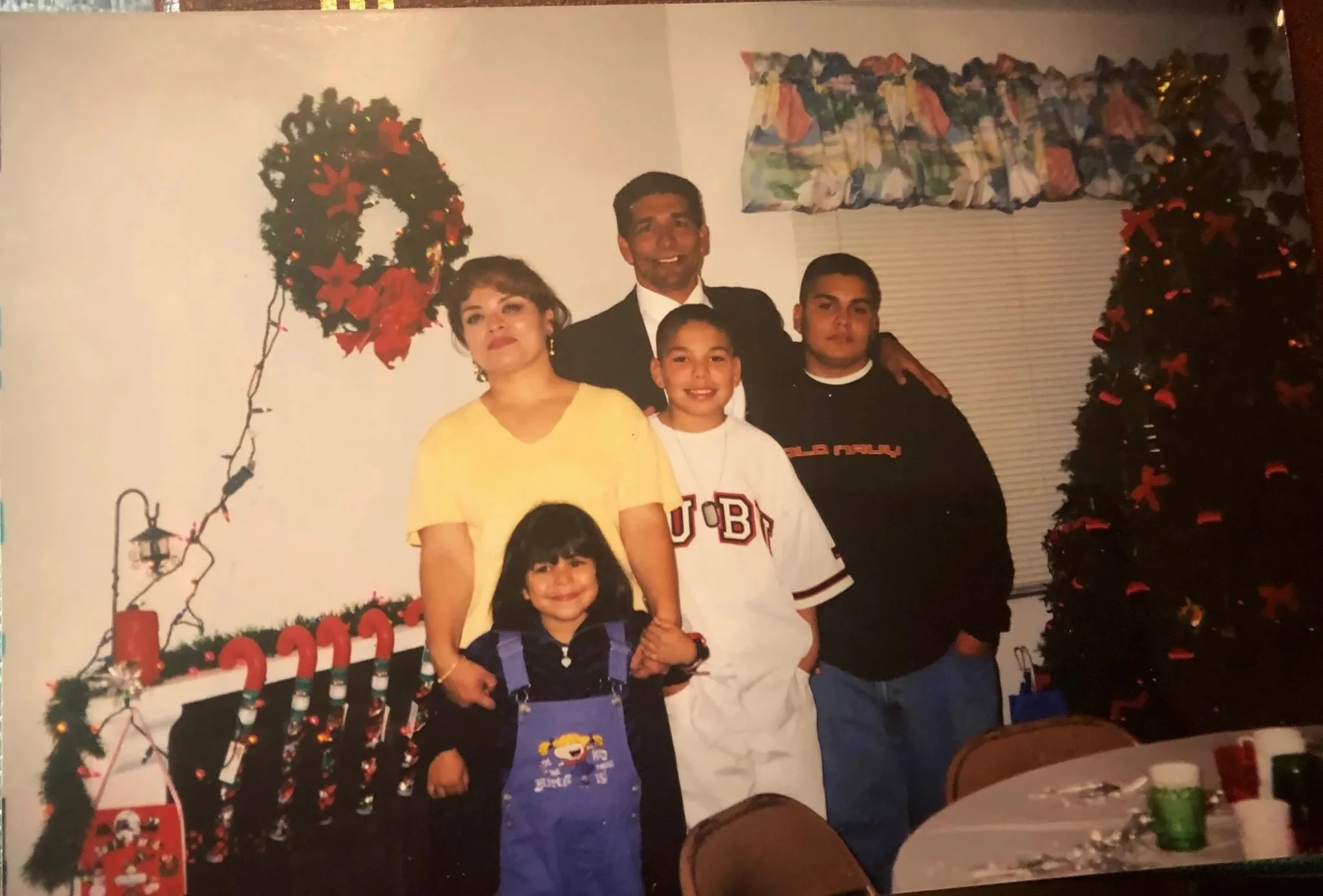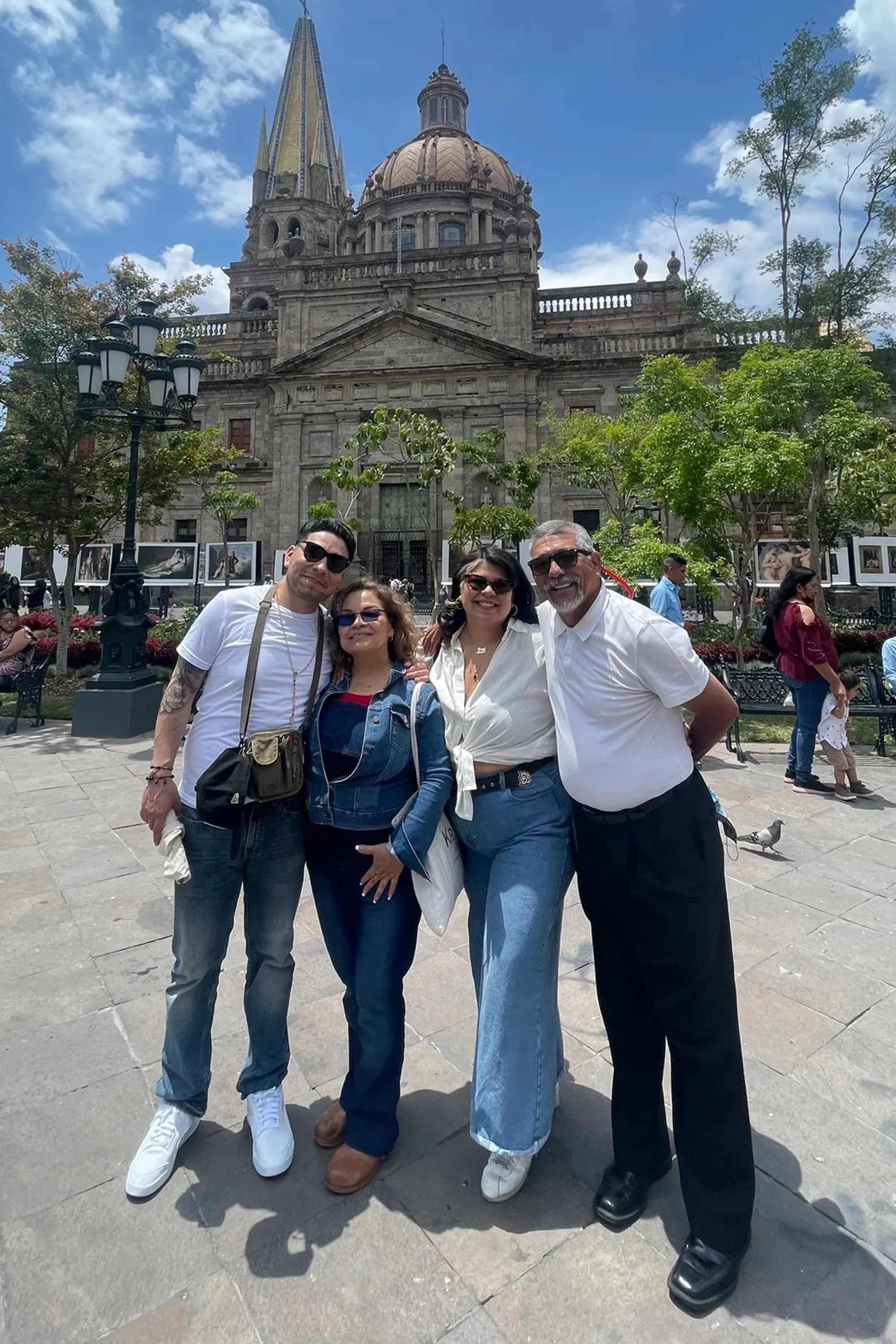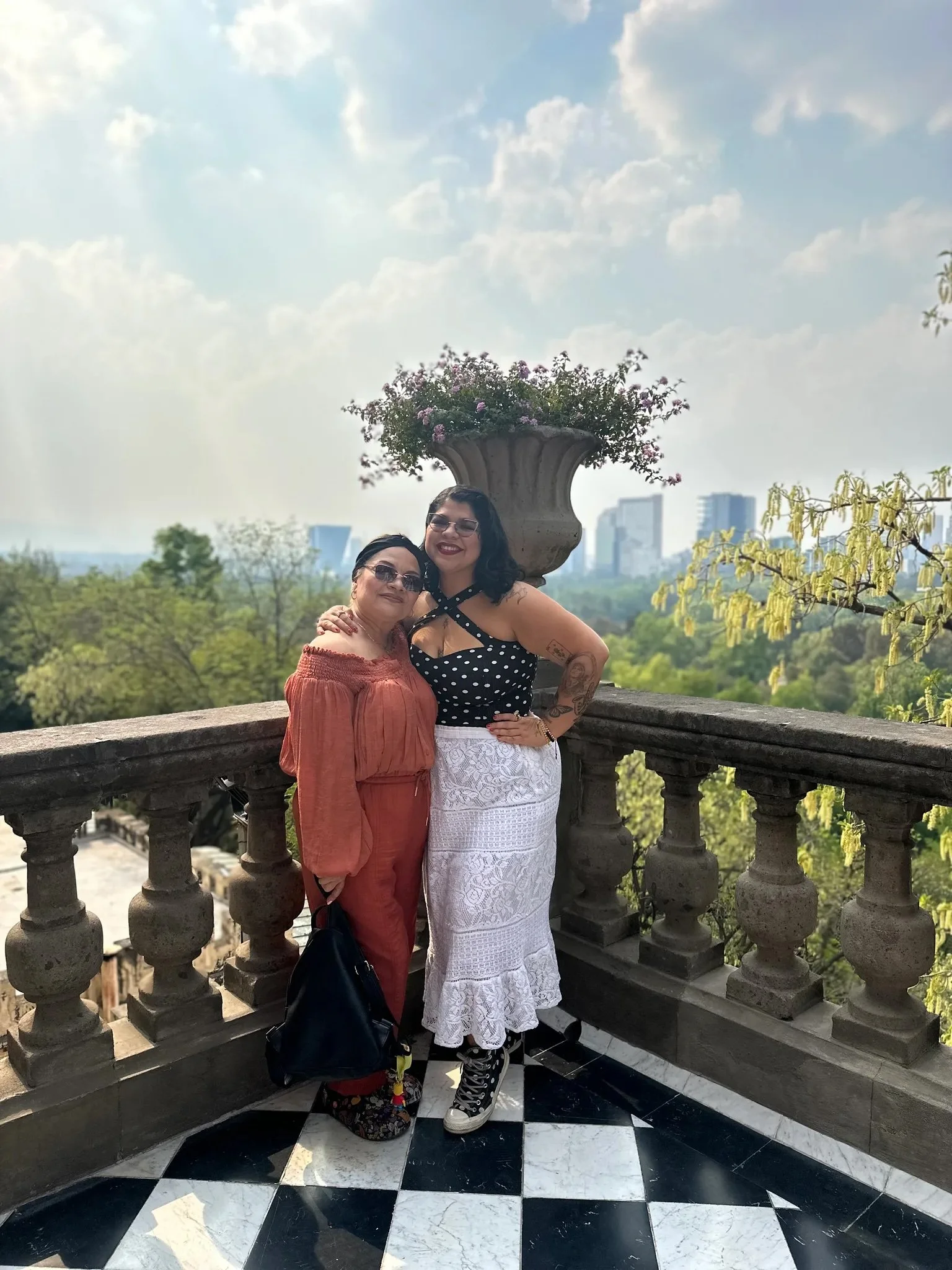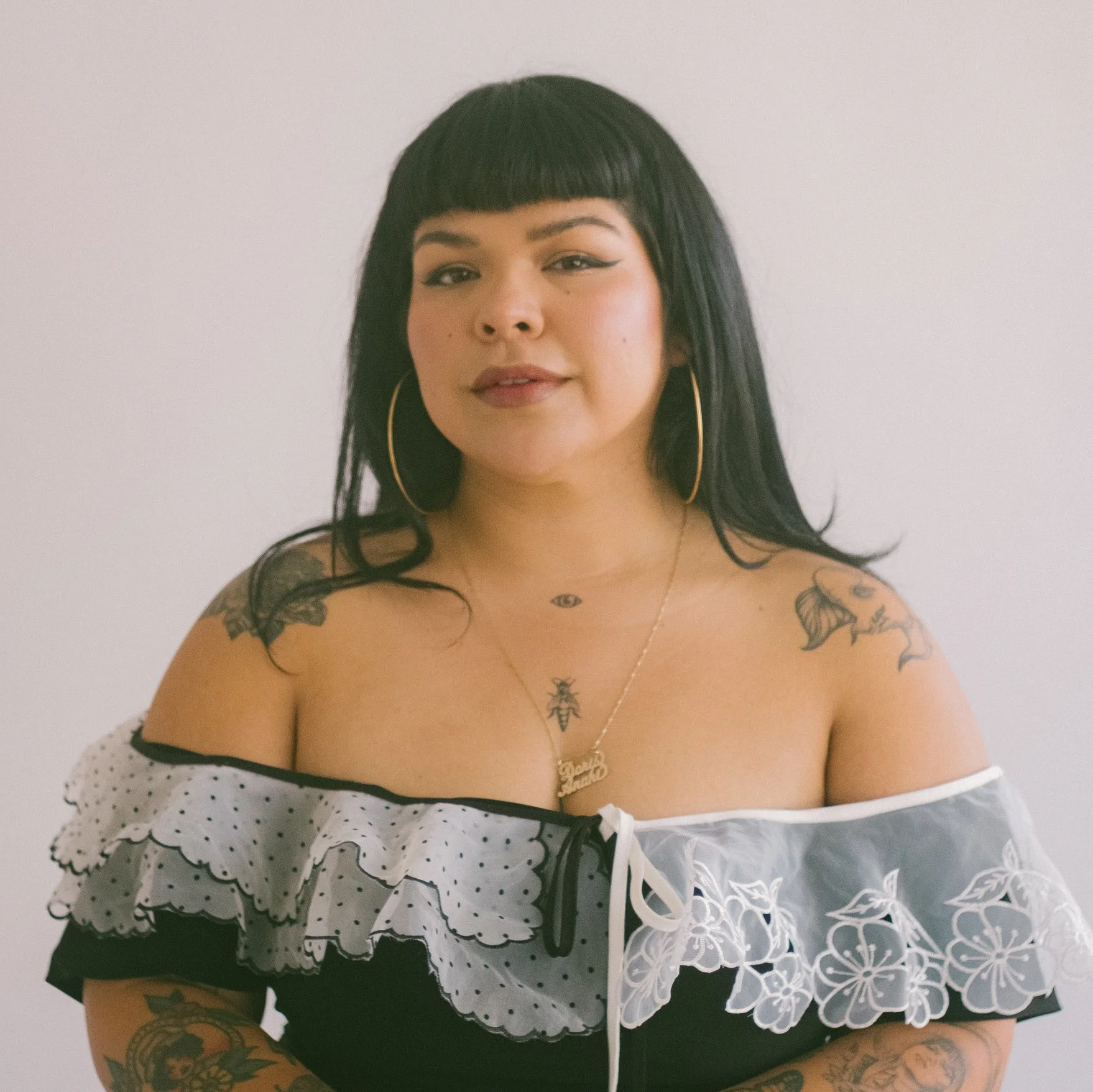ICE destroyed her family’s American Dream — so she’s chasing the Mexican Dream
Doris Anahi Muñoz visits her brother Jose through the border fence at Friendship Park in 2017, two years after his deportation to Mexico. The park, located between San Diego and Tijuana, is one of the few places where families separated by immigration enforcement can meet face-to-face. Photo courtesy of Doris Anahi Muñoz
A Chicana artist navigatES life between two countries–where immigration raids on one side, and anti-gentrification protests on the other complicate where she can call home.
Editors Note: This article was originally published by LA Public Press, an independent, non-profit newsroom that publishes news in support of a healthier Los Angeles.
Haga clic aquí para leer este reportaje en español.
This year marks the 10th anniversary of splitting my life between the two countries I call home. My brother Jose was deported from the United States in October 2015 at age 29. He had been here since he was 2 years old. He was returned to Mexico, a country he didn’t even know.
My parents arrived in the U.S. with my two older brothers in 1989, following the rest of my mom’s family’s migration, missing their window for the Amnesty program. I was the only citizen in my family, born in Whittier and raised across Southern California. I grew up well aware of our situation, the privilege my social security number gave me, knowing that at any given moment or traffic stop, my family could be taken from me.
In 2015, I was in my last year of college, studying flashcards for my music industry midterm, when my mom called to tell me that my worst nightmare had come true.
In the 10 years since, I’ve crossed the San Ysidro Port of Entry more times than I can count, spending hours in line with a heaviness in my chest. When I’d visit my brother in Tijuana, he would ride with me until I was about to cross over. He’d hop out, we’d say our goodbyes, and I’d cry the rest of the way home. As a child, I felt the frustration of injustice for my family. But I silenced those feelings, afraid of outing their immigration status. As an adult, with their blessing, that frustration has turned into an outcry for them and the millions of families like ours.
Doris and her family celebrating Christmas in Rowland Heights, December 1999. Photo courtesy of Doris Anahi Muñoz
According to U.S. Immigration and Customs Enforcement data, 271,484 people were removed from the United States in fiscal year 2024—each deportation fracturing families like mine. Many of our parents came to the U.S. sold on the “American Dream” only to find themselves living a nightmare. They sacrificed their dreams and their careers and worked exploitative, under-the-table jobs around the clock, with no path to citizenship in sight. Now I find myself, like other first generation kids sharing similar stories online, pursuing a reverse migration toward the “Mexican Dream.”
For a long time, I fantasized about what life would be like for my family had we stayed in Mexico, or at least had the opportunity to visit over the summer and holidays like I saw my friends and their families do, their vans filled to the brim with gifts and necessities for loved ones on the other side of the border. I made a promise to myself that one day I would give myself the opportunity to at least live a chapter of my life there. Now I’m fulfilling that promise.
I knew it wouldn’t be easy to take the leap to move back to the motherland. The final push came when, in the span of two months, my grandmother passed away, I ended an abusive relationship, and Disney shelved the documentary to which I had devoted my life. Grief swallowed me whole, and all I wanted was to heal and be held by my family and the land that gave them life.
Retracing the steps of my ancestors, I began in Guadalajara with my maternal side. I met around 25 family members for the first time, but the matriarchal connection with my tías and primas was so deep, it felt like the home I always dreamed of, allowing me to truly mourn my abuela through their stories.
Doris and her family in Guadalajara together for the first time, June 2022. Photo courtesy of Doris Anahi Muñoz
I then left for Mexico City to transmute my grief into music. I’ve been coming to the city since 2018. Over time I began to understand my family’s roots here, and I knew that my next music projects had to be created here–rooted in the connection to my ancestors.
Mexico is currently home to over one million Americans—the largest population of U.S. citizens living outside the United States—with an estimated 700,000 in Mexico City alone. Two and a half years later, I’m still here.
My dad’s side of the family has been in this city for nearly 100 years, coming down from Alamos, Sonora, in the 1930s for my bisabuelo’s government job. They had always been a mystery to me, as my abuelo was a pilot and died in a plane crash when my dad was a teenager. Through interviews with my two last living tía abuelas, I discovered family lore I never knew—stories of quinceañeras at Castillo de Chapultepec and possible connections to legendary Mexican cinema stars. It was a life I never knew existed as a low-income, first-generation kid of undocumented immigrants, stuck in a country that my family couldn't leave.
Support the voices of independent journalists.
|
So what does it mean for me to be here in Mexico today as a dual citizen?
Over the course of this month, anti-gentrification protests have erupted across Mexico City. Demonstrators are expressing their rightful anger at the exploitation of the cost of living, which has been inflated by the surge of foreigners who have come here since the pandemic-induced digital nomad movement.
Meanwhile, back in California, the number of people reporting to work in the private sector decreased by 3.1% after immigration raids began—a downturn only recently matched by COVID-19 lockdowns, showing how enforcement tears apart both economies and communities. As a Mexican American, I’ve been caught in the crossfires of this ongoing discourse.
The discourse goes much deeper than not being American enough for the Americans, or Mexican enough for the Mexicans. It’s about the question: Where can we call home? A home that feels safe and dignified and where you actually belong.
Doris and her mom visiting the Castillo de Chapultepec, April 2023. Photo courtesy of Doris Anahi Muñoz
As an artist and freelancer, I’ve worked contracts in pesos and dollars. My parents made the sacrifices they did for me to have that opportunity. It’s a privilege I do not take for granted. But what does that mean for people like my brother who have been deported, lived their whole lives in the states, and jobs they can get are call centers that pay in dollars? Or folks who live in Tijuana and have to pay rent in dollars? Where do we fit in this equation?
All I wanted was for folks in the U.S. who dehumanized families like mine, writing us off as “illegal”, to see our humanity. I didn’t realize I would also have to fight for our existence with our folks back in Mexico too.
The work of Chicana scholar and foremother, Gloria Anzaldua, reminds us we are not alone in existing in this liminal space — Nepantla, the Nahuatl word for “in-between.” This feels like a true reflection of my identity, and the chapter of my life from which I’m emerging. I have always known that my purpose living in Mexico is to bridge my two worlds: countries, identities and cultures.
Doris sings accompanied by mariachis in Xochimilco, Mexico City. Photo by Luar Klinghofer Bar Dov, courtesy of Doris Anahi Muñoz
I am grateful for everything this land has given me, and I will live here for as long as I am meant to. Wherever life takes me, if and when I have to go back to the U.S. to pursue other dreams, my goal is to create everything I can from my time here and bring it back as an offering to our people over there.
I know I will still spend the rest of my life in between both countries. And if I am to have a family to call my own one day, I’ll spend the summers I never got to have as a kid with them and my family in Mexico. I will honor my parents’ sacrifices in every way I can, and continue to pass on the love for our roots to the next generation. As our paisanos are persecuted up north, I hope to see growing solidarity and welcome among our own people south of the border as well.
—
Doris Anahi Muñoz is a Mexican American artist from Southern California, now based between LA and Mexico City, whose work bridges music, storytelling, and advocacy. She is the founder of Solidarity for Sanctuary, and a Senior Fellow in Civic Media at USC’s Annenberg Innovation Lab. She was featured in the Sundance-premiered documentary ‘Mija’, and has released two EP’s (‘Aprendiendo Por Las Malas’ and ‘Por Las Buenas’). She was recently honored with the 2024 Latino Spirit Award by the California Latino Legislative Caucus, and currently works on her debut album and memoir in Mexico City to continue building bridges between her worlds in the U.S. and Mexico. @mijadoris
Michelle Zenarosa is editor in chief at LA Public Press. She has 20 years of experience in journalism at outlets including Fusion, Everyday Feminism, New America Media, and LA Weekly. Previously, they were deputy editor at Reckon, covering reckonings in America, and community manager at USC's Annenberg Innovation Lab, curating the Civic Media Fellowship. She's a grouchy ex-punk, serious about her snacks, and parent to a silly 8-year-old bug lover. @zenagrossa
Rodrigo Cervantes is an award-winning bilingual journalist and communications strategist with extensive experience in the U.S., Mexico, and internationally. He has contributed to outlets such as NPR, CNN, The Los Angeles Times, and the BBC. Cervantes led KJZZ’s Mexico City bureau, where he launched the first overseas bureau for a U.S. public radio station. He also served as Business Editor-in-Chief for El Norte, part of Grupo Reforma, Mexico’s leading newspaper company. In Georgia, he led the newsroom of MundoHispánico, then the state’s oldest and largest Latino publication, under The Atlanta Journal-Constitution. His work has been recognized with RTDNA Murrow Awards and José Martí Awards from the National Association of Hispanic Publications (NAHP). He is the former Secretary of the National Association of Hispanic Journalists (NAHJ) and currently serves as co-managing editor of palabra, and as a clinical assistant professor at Arizona State University’s W. Cronkite School of Journalism and Mass Communication. @RODCERVANTES

